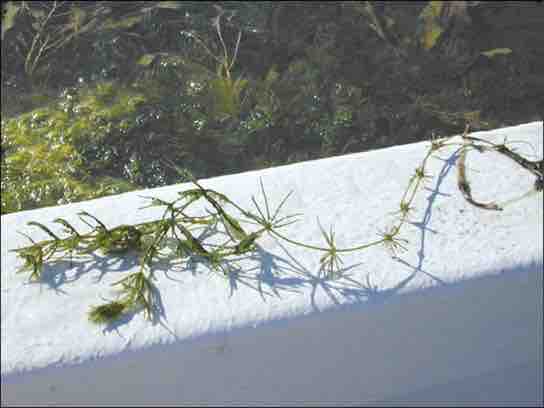Charales
Green algae in the order Charales, and the coleochaetes, microscopic green algae that enclose their spores in sporopollenin, are considered the closest-living relatives of embryophytes. The Charales can be traced as far back as 420 million years. They live in a range of fresh water habitats and vary in size from as small as a few millimeters to as large as a meter in length. A representative species of Charales is Chara, which is often called muskgrass or skunkweed because of its unpleasant smell .

Charophyte algae
A representative charophyte alga, Chara, is a noxious weed in Florida, where it clogs waterways.
In Charales, large cells form the thallus: the main stem of the alga. Branches arising from the nodes are made of smaller cells. Male and female reproductive structures are found on the nodes; the sperm have flagella. Unlike land plants, Charales do not undergo alternation of generations in their lifecycle. Like embryophytes, Charales exhibit a number of traits that are significant in their adaptation to land life. They produce the compounds lignin and sporopollenin. They form plasmodesmata, which are microscopic channels that connect the cytoplasm of adjacent cells. The egg and, later, the zygote, form in a protected chamber on the parent plant.
New information from recent, extensive DNA sequence analysis of green algae indicates that the Zygnematales are more closely-related to the embryophytes than the Charales. The Zygnematales include the familiar genus Spirogyra. As techniques in DNA analysis improve and new information on comparative genomics arises, the phylogenetic connections between species will probably continue to change. Clearly, plant biologists have yet to solve the mystery of the origin of land plants.